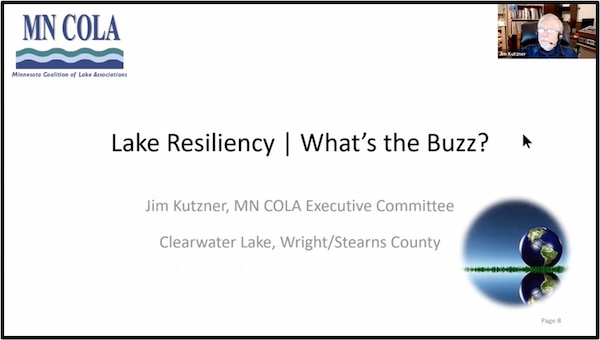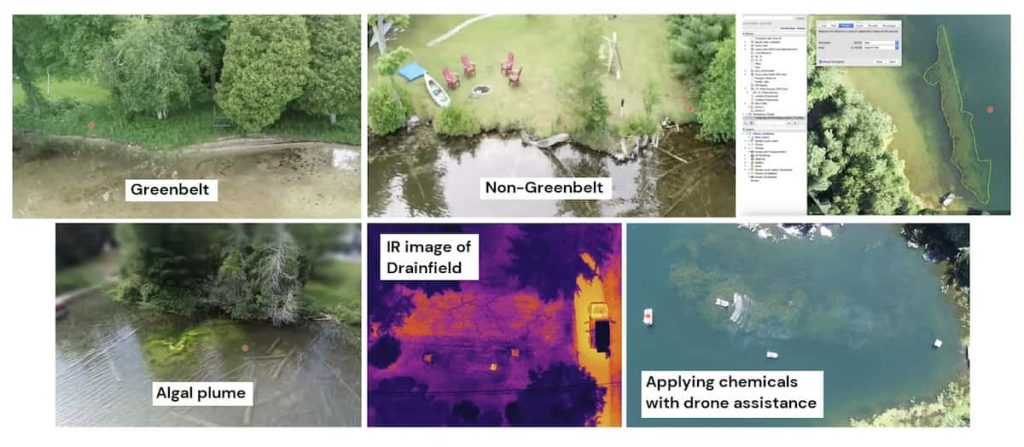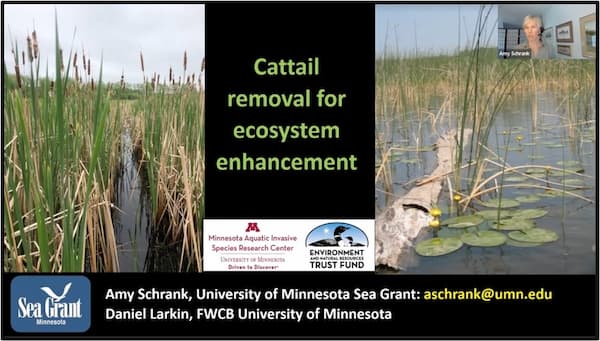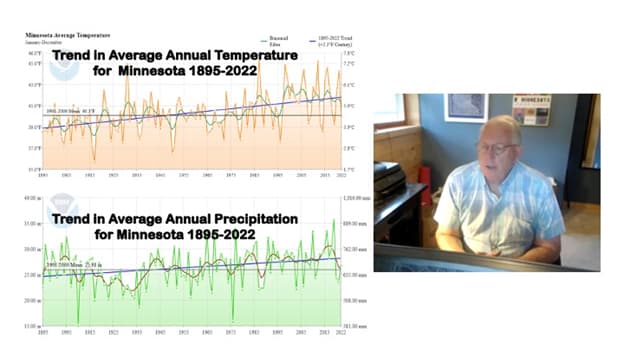Lake resiliency is one of the most concerning issues facing our Minnesota lakes and rivers.
Driven by climate changes, human development, and shoreline changes, our waters face new threats.
MN COLA is helping you understand the coming changes to help you and your associations prepare. It is so important that we’re focusing more than two years of our membership meetings on it.
Check out the video presentations below to help increase your knowledge on this critically important topic.
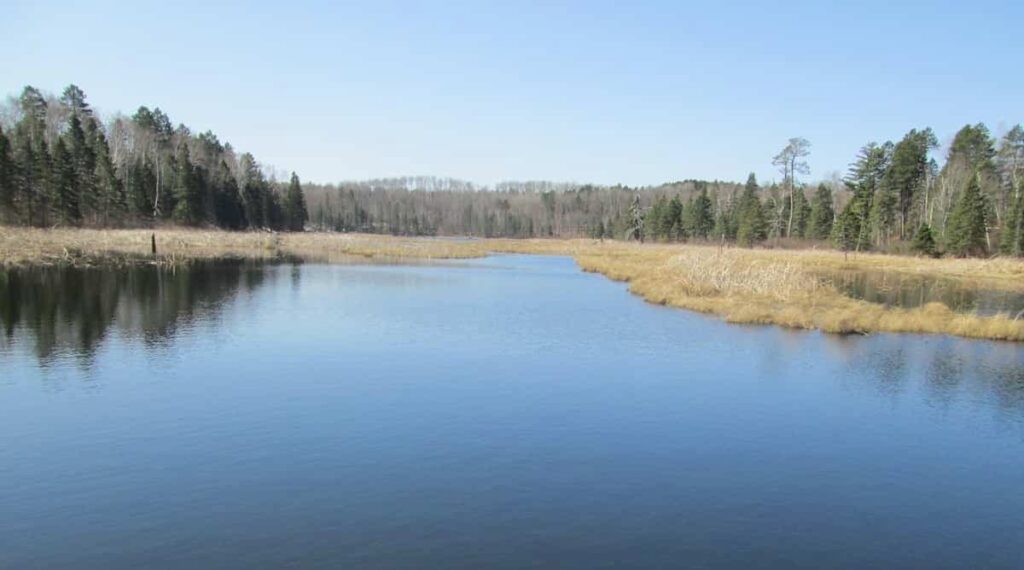
Lake Resiliency
Climate change is happening, but what should we be expecting here in Minnesota? Jim Kutzner from MN COLA provided an overview of the climate change impacts on lake resiliency. This brief overview covers recent predictions and details of the expected effects of climate change in the upper Midwest. Predictions come from both the Sixth Assessment Report from the Intergovernmental Panel on Climate Change, an offshoot of the United Nations, and from the Fourth National Climate Assessment, from the US Global Change Research Program. Predictions include how climate change is expected to affect lakes, crop production, and other matters important to Minnesotans and Minnesota waters. The famous “hockey stick” chart is discussed where global temperatures began to rise above pre-industrial levels around the mid 20th century and have continued to rise unabated.
Lake resiliency is very important to MN COLA, who made it the theme for 2022 membership meetings and this continues into 2023. (December 7, 2021)
Protecting the Sponge
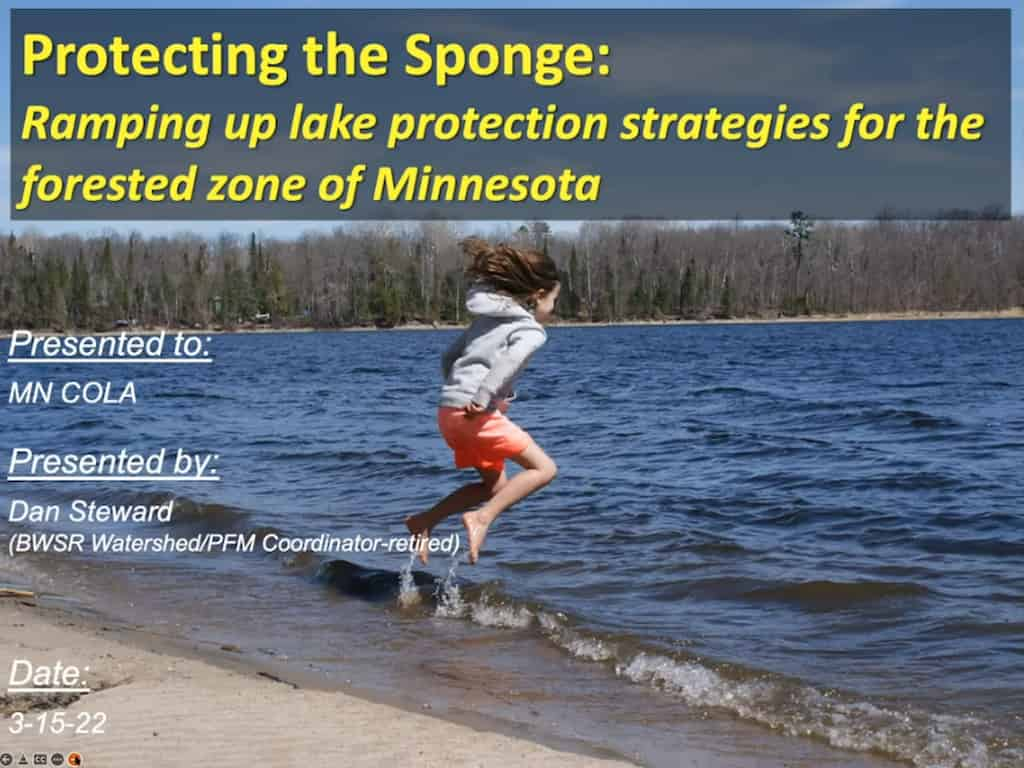
The “sponge” refers to the forests and lands around lakes and they substantially contribute to the health of the lake. Understanding the importance of the “sponge”, a.k.a., the forests, and how they interact with the lake is essential in understanding the lake itself and its water quality. Rebecca Carlson, Administrator and Engineer, Clearwater River Watershed District, refocuses the audience on lake resiliency. Then Dan Steward, Board of Soil & Water Resources-retired, explains why it’s important to “Protecting the Sponge”, describing the substantial impact surrounding forests and lands have on water quality. (March 15, 2022)
Protecting the sponge is protecting the lake!
Vanishing Natural Shorelines
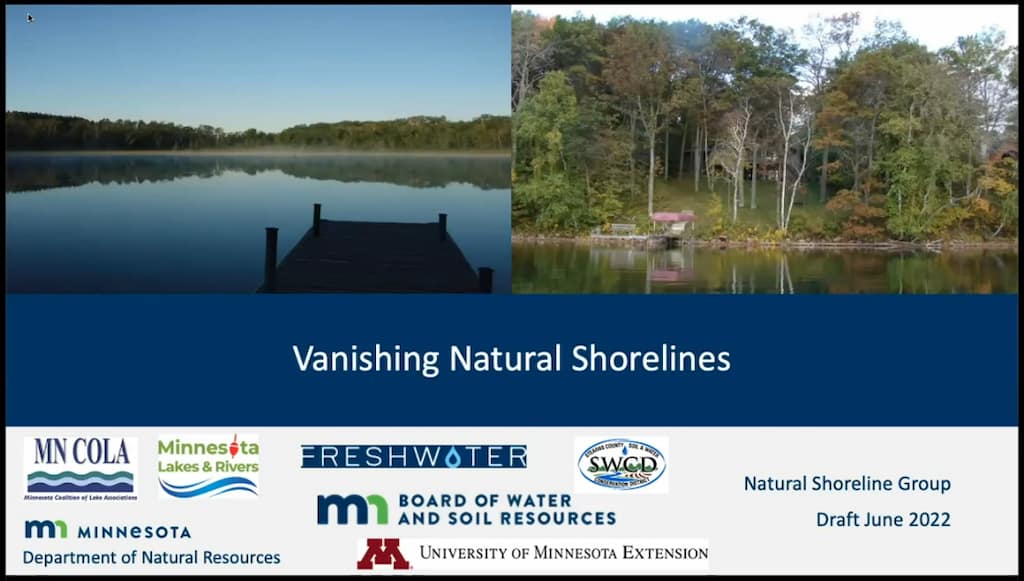
After a brief review by Rebecca Carlson, Paul Radomski from the MN DNR makes the connection between natural shorelines and their impact on water quality. Paul also talks about 2nd tier developments around lakes and rivers. (June 14, 2022)
2nd Tier Developments – what are they and why should we care?

This presentation focuses on understanding the connection between natural shorelines and their impact on water quality. Attorney Tim Keane discusses the impacts of 2nd Tier developments on lakes and rivers. Tim describes what they are and why you should care as he outlines the related issues around 2nd tier developments. As a real-world example the image on the right shows 126 trailer slips that were combined with six cabins to form a large recreational community on a 1509 acre lake that was already nearly fully developed. (September 20, 2022)
Using Drones for Lake Management
Rebecca Carlson rolls back the clock 20 years to illustrate how satellite and drone technology have developed enabling huge improvements in efficiencies and capabilities in water management. Rebecca introduces Dennis Wiand, ZeroGravity Ariel, and Ron Reimink, Freshwater Solutions, both of Michigan demonstrate their work and how it changes and improves water management. The two discuss their work with lake associations to assess shorelines where problem areas are discovered. Drones are also used in assessing drainfields, aiding precise chemical and benthic mat applications, and in general assessment of lakes. Identification of specific species from the air is also explored. This is a new application of drones and we’re still on the steep rise in the learning curve. (December 6, 2022)
Hybrid Cattails – what’s the concern?
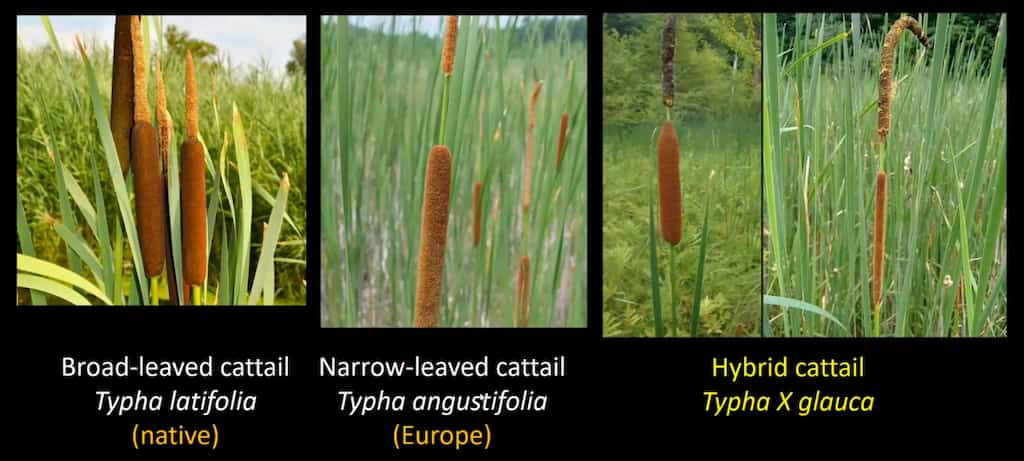
Amy Shrank, University of Minnesota Sea Grant program, provided an overview of her research that began in 2021 to achieve a healthier lakeshore ecosystem by removing invasive hybrid cattails. Hybrid cattails are invading Minnesota and Amy describes the situation and the threat. She guides the viewer to better understand how removing invasive hybrid cattails can achieve a healthier lakeshore ecosystem. (December 7, 2021)
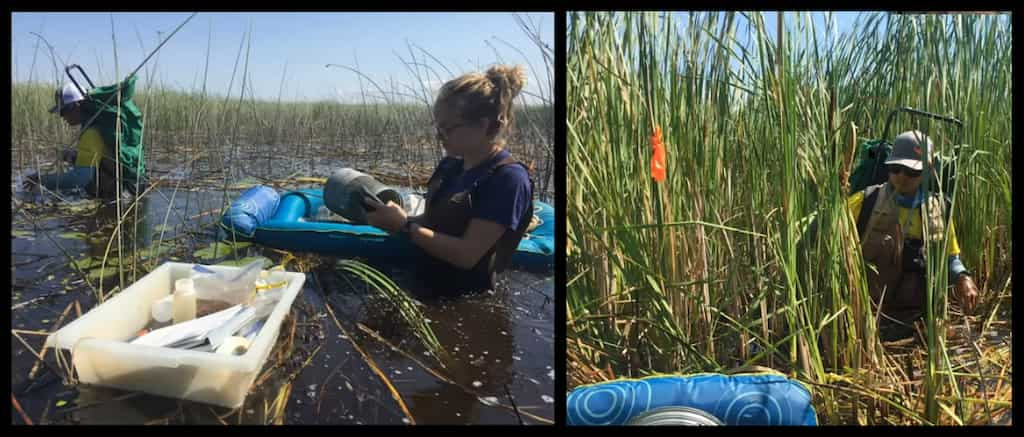
Michigan’s Glen Lake Association sets a high bar protecting water quality
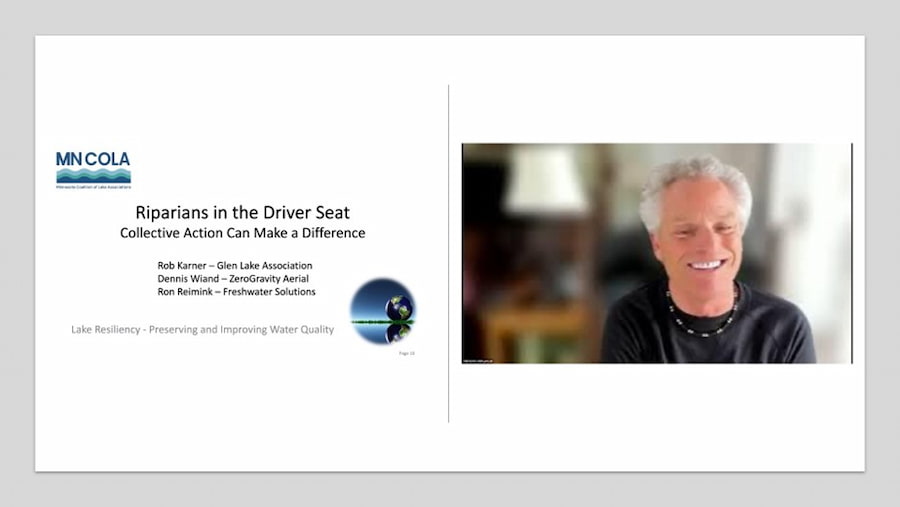
Our Lake Resiliency topic at the March Membership meeting was a follow-up to December’s presentation on using drones for surface water management, but it was much more.
Rob Karner, the biologist for the Glen Lake Association in Michigan, took center stage and talked through their comprehensive approach to using their shoreline survey to drive water quality improvements. Rob was supported by Dennis Wiand and Ron Reimink who spoke about the drone technology in December. It was a fascinating discussion, full of common sense and insights. One came away from the discussion with the thought that this is a lake association that is driven to preserve and protect their water quality. They are well organized, focused, and have set the bar very high. Everyone who watches the video can gain something that will help propel your lake association forward. It’s worth your time! (March 14, 2023)
Evidence for Climate Change in Minnesota: Impacts on Water Resources
Dr. Mark Seeley, renowned climatologist/meteorologist from the University of Minnesota, gave us an eyes-wide-open presentation about climate change, with a focus on Minnesota. There is a high degree of climate variability, and in particular, Minnesota is experiencing higher temperature and rainfall erraticism. Mega rains are more frequent and higher dew points are preventing cooling. Lakes are warming—particularly shallow lakes, and there is less ice cover in the winter. Dr. Seeley puts it into focus and provides evidence of where we may be heading (September 26, 2023)
Effects on lake due to the limited snow cover during the winter of 2023-24
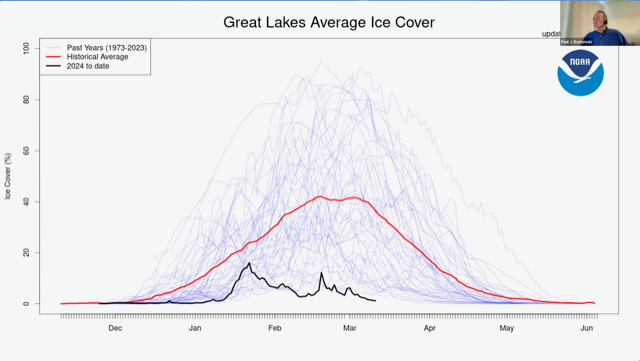
Paul Radomski of the MN DNR and Steve McComas of Blue Water Science teamed up to present their studies and predictions of the expected results of the limited snow cover and ice on Minnesota lakes. Radomski presented his studies of the resultant effects and impacts to fisheries due to the limited snow cover and ice on the great lakes. He presented charts showing the average world daily land and sea temperatures which show steady increases over the last few years. He showed that the Great Lakes are experiencing declining ice. He then brought it closer to home with historical charts for Minnesota. He discussed what we might expect in Minnesota lakes with respect to both fisheries and vegetation. Here is the video presentation.
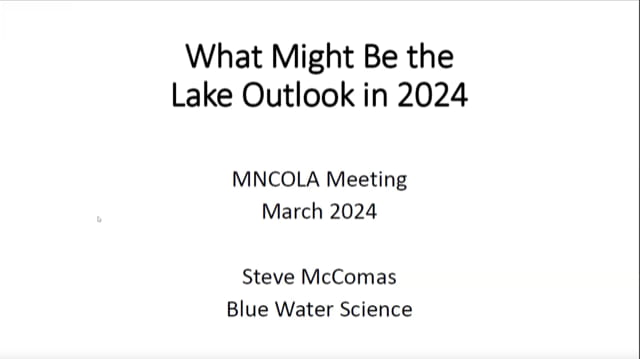
Steve McComas then took the lead to discuss what we should expect in Minnesota lakes during the 2024 season. He expects a lower than normal nutrient load as little snow resulted in diminished runoff. For the same reasons he expects a higher than normal water clarity. Because of the late ice-in and early ice-out (and much less ice fishing) there was less pressure on fish, meaning we should expect to see more fish. But we should also expect to see more vegetation. Warmer temperatures should result in more growth of curlyleaf pondweed (CLP). McComas’s presentation can be viewed here.
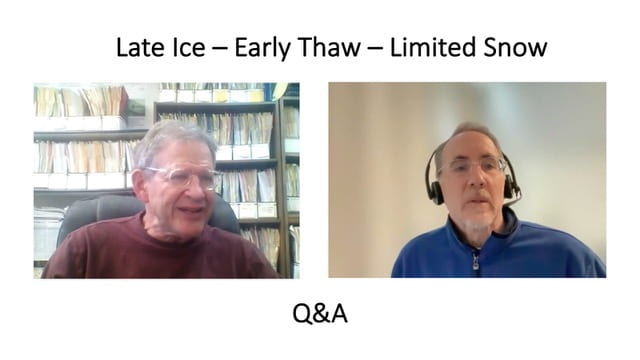
Radomski and McComas then teamed up to lead a very informative and lively Q&A session. They added perspective and details to their presentations. The Q&A session can be viewed here.


